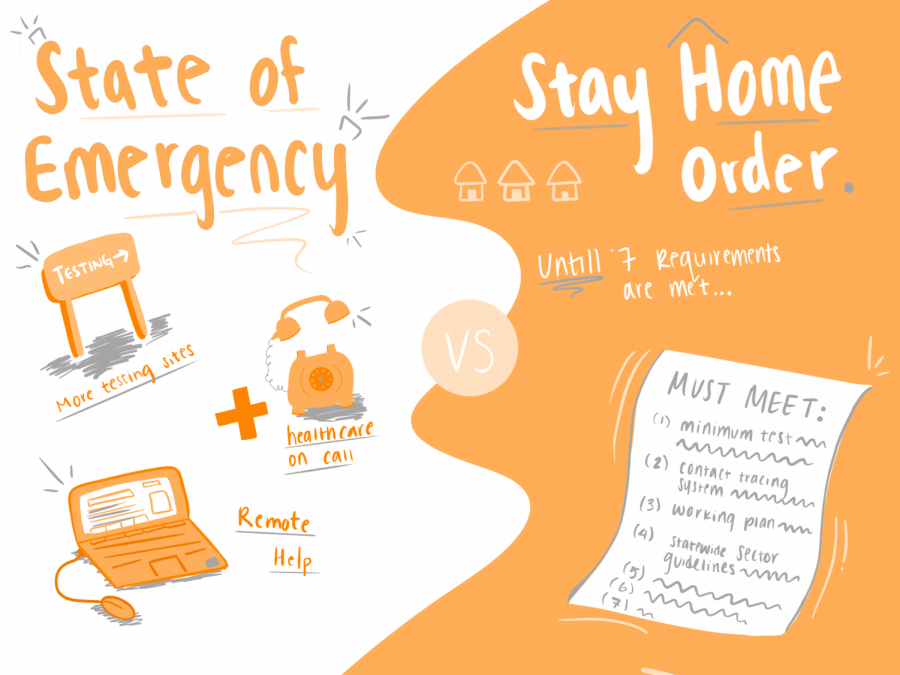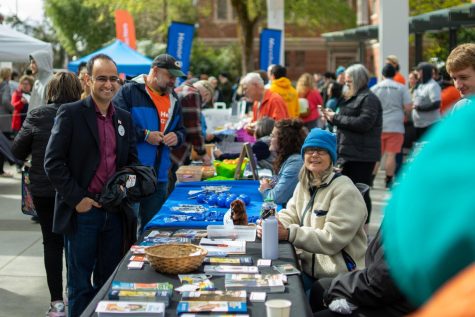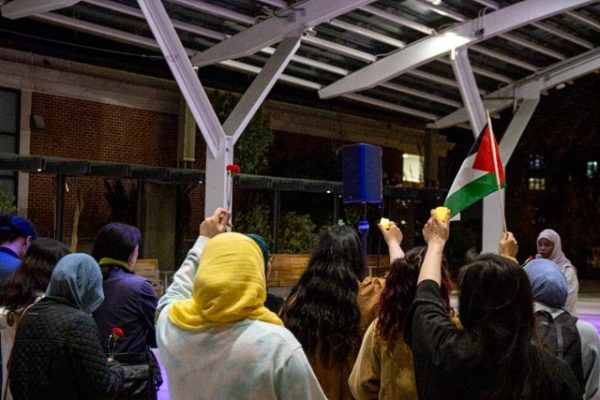Difference between a state of emergency, stay at home order
May 28, 2020
On Friday, May 1 Oregon Governor Kate Brown signed an executive order extending the state of emergency in the state of Oregon through July 6.
There have been questions on how a state of emergency differs from the stay at home order that is also in effect. The Stay Home, Save Lives executive order was put in place March 23 without a designated lift date. The state of emergency was initially implemented March 8 and was set to continue through May 7. In light of the current COVID-19 pandemic and the remaining threat to local communities, this date has been pushed back.
Extending the state of emergency allows accelerated assistance and resources to those who need them. With this in place, more testing sites remain available, emergency volunteer healthcare workers are on call and remote care allows patients to be screened without possibly infecting more people.
Extending the state of emergency also allows the governor’s office to maintain the authority to give executive orders when deemed necessary. Gov. Brown has been given the leverage and ability to “swiftly and fully deploy the personnel and resources necessary to address” the outbreak, Brown said in a recent press conference.
The stay at home order will be in place until counties can meet these seven prerequisites; establishing a minimum testing regimen; implementing a contact tracing system; having a working plan for isolation facilities; finalizing statewide sector guidelines; and ensuring sufficient healthcare capacity and personal protective equipment supply.
More details regarding Oregon’s Stay Home, Save Lives executive order and state of emergency can be found here. Gov. Brown has slowly started to map out the reopening of Oregon communities. Benton County, along with many other counties around Oregon, began reopening businesses and allowing gatherings of up to 25 people on Friday, May 15, though COVID-19 public health measures still remain in effect.
Gov. Brown also implemented a new plan for COVID-19 outbreak tracing in Oregon. This new plan is said to add 600 contact trancers, some paid positions and some volunteers. Oregon Health and Science University is also creating a team of students for contact tracing. OSU also initiated a tracing project called TRACE-COVID-19 to help track cases in the Corvallis community.
“A strategy of testing and tracing helps us identify who has the disease and who may be at risk of infection—knowledge that is incredibly powerful as we look to reopen,” Brown said in a press conference.
This plan is intended to monitor the careful reopening of small communities. Tracers will be bilingual and multicultural in order to help minority communities that are most vulnerable. Gov. Brown describes this strategy as a “game changer” granting the state a more in-depth, accurate understanding of the outbreaks across the state.






















































































































